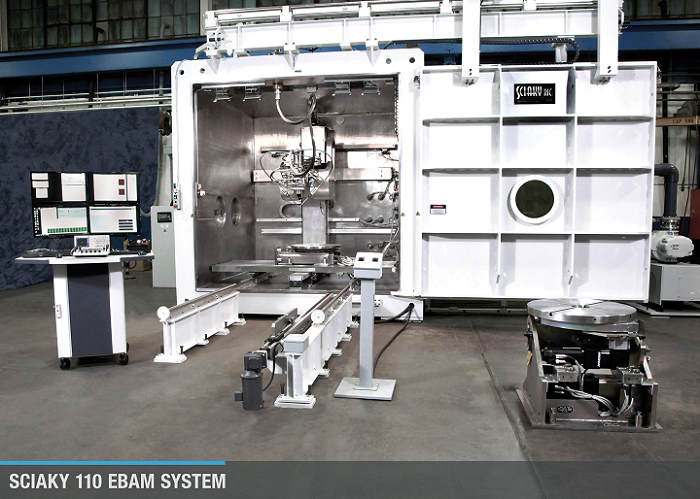Software is proving to be crucial to the advancement of 3D printing, specifically when it comes to metal additive manufacturing. This is proving true in powder bed fusion (PBF) and bound metal printing (BMP). One area receiving somewhat less attention is directed energy deposition (DED). Though it has much less market share than PBF and is less trendy than BMP, DED will be crucial in such industries as aerospace, space, and energy, where the ability to 3D print large metal blanks and finishing them to spec with subtractive tools is proving to be extremely exciting.

Just as simulation software is helping users and original equipment manufacturers (OEMs) to perfect PBF and BMP, it is doing the same for DED, as demonstrated by a new partnership between DED manufacturer Sciaky and software leader Hexagon (Nasdaq Stockholm: HEXA B). A pioneer in DED, through its initial development with Lockheed Martin, Sciaky is known for its enormous electron beam additive manufacturing (EBAM) systems. Using low-cost feedstock, the EBAM process is able to 3D print titanium, tantalum, and nickel alloy structures up to 20 feet in length.
Already, Sciaky, a subsidiary of Phillips Service Industries, has introduced closed-loop quality control into its 3D printers, a rarity in the entire 3D printing industry. The company’s Interlayer Real-time Imaging and Sensing System (IRISS) relies on sensors to receive input during the printing process and then adjust in real-time to improve repeatability and precision.
This will be complemented by Hexagon’s Simufact solution, brought under the Hexagon umbrella with the acquisition of MSC Software in 2017. Simufact is able to simulate the thermal-mechanical behavior of DED so that users can analyze the thermal history, stresses, strains, and distortions of the process. In turn, they can optimize the build and printing parameters before printing. Hexagon notes that the “software reads EBAM’s printer trajectories and process parameters directly,” automatically adjusting the G-code for the printer.
“Our goal is to deliver process simulation solutions that enable manufacturers to perform predictive analyses for parts faster than the part can be physically built and measured,” said Jeff Robertson, business development – virtual manufacturing and costing solutions, Hexagon, “Not long ago, it took months to complete high-quality simulations for these types of additive processes, but through our collaboration we now have the ability to make the same accurate predictions in days or hours, so the technology can facilitate the efficient use of Sciaky’s powerful additive capabilities for parts of any size or complexity.”
By combining simulation and in-process quality control, Sciaky is able to offer what few other companies are able to in the industry. It’s even researching deep learning for process control, as well. The closest equivalent would be VELO3D, except that VELO3D is a PBF company which has combined simulation and in-process quality control for its metal 3D printing process. However, if Sciaky is doing this, then that means others are working on it, too, meaning that this type of solution is just one variable that is likely driving the large metal and DED 3D printing market, expected by SmarTech Analysis to reach $739M by 2026.
Subscribe to Our Email Newsletter
Stay up-to-date on all the latest news from the 3D printing industry and receive information and offers from third party vendors.
Print Services
Upload your 3D Models and get them printed quickly and efficiently.
You May Also Like
Making 3D Printing Personal: How Faraz Faruqi Is Rethinking Digital Design at MIT CSAIL
What if your 3D printer could think more like an intelligent assistant, able to reason through a design idea, ask questions, and deliver something that works exactly the way the...
Reinventing Reindustrialization: Why NAVWAR Project Manager Spencer Koroly Invented a Made-in-America 3D Printer
It has become virtually impossible to regularly follow additive manufacturing (AM) industry news and not stumble across the term “defense industrial base” (DIB), a concept encompassing all the many diverse...
Heating Up: 3D Systems’ Scott Green Discusses 3D Printing’s Potential in the Data Center Industry
The relentless rise of NVIDIA, the steadily increasing pledges of major private and public investments in national infrastructure projects around the world, and the general cultural obsession with AI have...
Formlabs Teams Up with DMG MORI in Japan
In late June, Nick Graham, Chief Revenue Officer at Formlabs, announced on LinkedIn that the company had partnered with DMG MORI, one of the world’s leading machine tool companies, to...

































